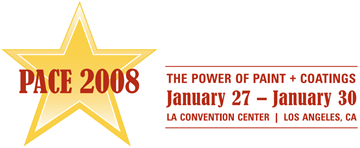Search
Products tagged with 'Standard Practices'
View as
Sort by
Display
per page
A Contractor’s Overview of Fall Protection: Here’s a practical reminder about regulations and practices for protecting painters from falls
Product Number:
41211-617-SG
Publication Date:
2011
$20.00
ANSI/NACE No. 13/SSPC-ACS-1-2016, Industrial Coating and Lining Application Specialist Qualification and Certification
Product Number:
21122-SG
Publication Date:
2015
$179.00
ANSI/NACE SP0115-2015/ISO15589-2:2012, “Petroleum, petrochemical and natural gas industries — Cathodic protection of pipeline transportation systems — Part 2: Offshore pipelines”
Product Number:
21190-SG
ISBN:
1-57590-310-5
Publication Date:
2015
$220.00
ANSI/NACE SP0300-2016/ISO 16784-1:2006, “Corrosion of metals and alloys — Corrosion and fouling in industrial cooling water systems — Part 1: Guidelines for conducting pilot scale evaluation of corrosion and fouling control additives for open recirculating cooling water systems”
Product Number:
21092-SG
ISBN:
1-57590-162-5
Publication Date:
2016
$109.00
ANSI/NACE SP0508-2017, Methods of Validating Equivalence to ISO 8502-9 on Measurement of the Levels of Soluble Salts
Product Number:
21134-SG
ISBN:
1-57590-222-2
Publication Date:
2017
$109.00
Assuring Quality with Certified Coating Contractors, Applicators, and Inspectors
Product Number:
51219-187-SG
Publication Date:
2019
$20.00
Benefits of Using Both SSPC & PDCA Standards in Project Specifications
Product Number:
41208-441-SG
Publication Date:
2008
$20.00
Bridge Maintenance Painting in the Land of 10,000 Lakes MnDOT’s approach to Improving Bridge Maintenance Painting Operations
Product Number:
41215-932-SG
Publication Date:
2015
$20.00
Changes to the Ambient Air Lead Standard – Obtaining Valid Results
Product Number:
41209-510-SG
Publication Date:
2009
$20.00
Cleaning and Painting Techniques and Practices used on Commercial Stores
Product Number:
41211-626-SG
Publication Date:
2011
$20.00
Composite Coatings: Basics of Fiber Reinforced Polymers for Pipe Repairs
Product Number:
51218-120-SG
Publication Date:
2018
$20.00












